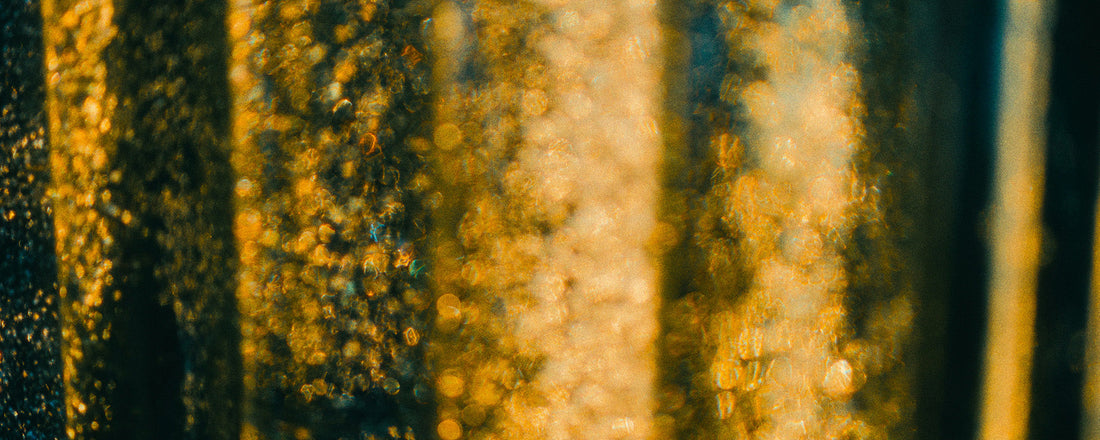Elemi Notes Explained: A Closer Look at Its Aroma in Perfume
The glittering resin has captivated perfumers for centuries, with citrus clarity and resinous depth.
In this article, we will uncover its scent character, its historic use, its heritage, and how Buchart Colbert used it to create layered, multi-layered perfumes.
Along the way, we will explore its olfactory nuances, its role in spiritual traditions, its technical extractions, and its role in today's niche fragrance world.
What Does Elemi Smell Like?
Elemi is a radiant complex note with warmth and brightness. Its character will be immediately recognizable to perfume lovers and connoisseurs of indie perfumery.
Much deeper than fleeting citrus head notes, elemi has a resinous base that gives it more character. It is a perfumer's delight to work with when they want to achieve fragrances that are energetic and rich.
- Fresh and Lemony: The top layer is bright and citrusy like sundried lemon zest.
- Peppery and Spicy: A lively spice emerges, adding a tingling energy that enlivens the overall profile without sharpness.
- Resinous Depth: Beneath the brightness, there's a warm, resinous layer that adds a soft, aromatic depth to the scent.
- Woody-Spicy Facets: As it dries down, wood and spice notes emerge, contributing to its uplifting and dynamic character.
On its own, elemi often evokes the sparkle of crushed citrus peel sprinkled with black pepper, yet the longer it rests on a blotter or skin, the more the resinous notes reveal themselves.
With its complexity, elemi can be light and airy one moment, and meditative in the next.
The Origin of Elemi in Perfumery
Derived from the resin of the Canarium luzonicum tree, locally known as Pili, the elemi is native to the Philippines. A botanical cousin of frankincense and myrrh, its spiritual burden is similar, but its sunnier, more rousing character is different.
Historically, the resin was originally used for purification ceremonies in incense, ointments, and balms. It later entered Western perfumery as a fresh, resinous alternative to heavier balsams, adding fresh brilliance to perfumes.
Botanical & Cultural Context
Elemi has always carried symbolic weight. Across cultures, it has been associated with clarity, purification, and renewal.
Sacred rituals utilized its resin for healing and meditative practices. Its dual nature, bright citrus freshness coupled with resinous gravity, mirrors the balance between lightness and depth. Some traditions also link elemi with summer brightness and contemplative rituals.
Extracting the Elemi Note
Steam distillation refines elemi’s resin into a bright, aromatic essence.
Rich in fresh, volatile compounds, the oil shines with lemon-pepper brightness, balanced by resinous undertones.
Modern perfumery often combines elemi with synthetics to bring out its citrus brightness or resinous richness.
How to Experience Elemi in Perfume
The first impression slowly transforms into woody-spicy base notes, and peppery edge melds with subtle resinous warmth, producing a silky development to the overall composition.
In well-crafted fragrances, elemi renews the mixture and adds elegant richness, balancing the perfume’s evolution with subtle sophistication.
Ideal for warm weather, elemi loves to sparkle in refreshing daytime fragrances. Its brightness amplifies mood and creates a sense of clarity.
To fully appreciate it, apply the scent to the skin and watch it unfold: the light top notes soften and linger subtly throughout the day.
What Are the Best Scent Pairings with Elemi?
Perfumers value elemi for its versatility and often apply it to blend radiant top notes with earthy base accords. Its ability to connect different notes makes it priceless to traditional and modern perfumes.
- Citrus Notes (Lemon, Bergamot, Grapefruit): These add to the lemony lightness of elemi, producing fresh, effervescent headnotes and giving the fragrance an invigorating personality.
- Spicy Notes (Black Pepper, Ginger): The peppery facet of elemi aligns seamlessly with these, bringing a spicy depth that lightens the scent without overwhelming other elements.
- Woody Notes (Cedar, Vetiver): These reveal woody-spicy notes that provide structure and a subtle earthiness to the dry down.
- Florals or Gourmand Notes (Neroli, Geranium): Elemi adds brightness and depth, balancing delicate floral notes with its resinous character.
In olfactive symphonies, elemi rarely plays a solo role; rather, it is the connective tissue that ensures harmony, where top, heart, and base notes link together without disharmony.
Common Misconceptions about Elemi
Elemi, a niche perfumery's favorite note, often has oversimplifications that overlook its nuanced character. By exploring these common misconceptions, we reveal the actual versatility and use of elemi in crafting expert compositions.
Misconception 1: Elemi Smells the Same as Lemon
While elemi contains citrus brightness, it's far more refined.
Lemon contributes clean, citrusy tartness from citrus peels. Meanwhile, elemi introduces a crisp, aromatic spice that gives the perfume a refined complexity.
In side-by-side comparisons, lemon evaporates quickly as a fleeting top note, while elemi hangs around, blending into woody characteristics that add substance.
Misconception 2: Elemi is Too Sharp or Outdated
Elemi has sometimes been misunderstood as too intense or even behind the times.
In truth, modern perfumery has recontextualized it, blending it with flowers like neroli or spices and wood to create sophisticated, balanced scents.
Far from outdated, elemi is now utilized in niche perfumery to serve as a spice that adds sophistication and nuance.
Misconception 3: Elemi is Only a Supporting Note
While elemi often plays a subtle role, dismissing it as merely supportive undervalues its capacity to shape a fragrance's entire structure.
In blends, elemi may lighten heavy woods or anchor fresh citrus accord impressions, bridging fragrance notes to give longevity and stability.
For instance, perfumers build around elemi to create uplifting profiles in citrus-resinous scents or to add sparkle to oriental bases.
This elevates elemi from background to transformative, demonstrating its value in refined perfumes.
Summary Table in the Scent Profile
| Notes | Typical Placement | Scent Profiles | Impact on Perfume Character |
|---|---|---|---|
| Elemi | Top/Heart | Fresh, citrusy, peppery, resinous | Adds brightness, bridges fresh top notes to woody bases. |
| Lemon | Top | Tart, zesty, citrus | Delivers a sharp, fleeting citrus burst, ideal for light, refreshing openings |
Elemi in Buchart Colbert's Creations
At Buchart Colbert, elemi holds a special place in our line of musically inspired Eaux de Parfum, where it contributes to the intricate scent symphonies that define our Indie Perfume House.
In Mischa, elemi becomes the heart note, providing a resinous-citrus lift to the saffron and the neroli. It recalls the moonlit reflections drawn from Tchaikovsky's opera Eugene Onegin.
When balanced with a crisp, airy note, the woods and spices reveal a fragrance that’s calm yet powerful.
Elemi reflects our focus on timeless, well-balanced fragrances made with precision and artistry.
For those eager to explore elemi and other complementary notes, you can do so through our Sample Discovery Set.
Key Takeaways
What does Elemi smell like? This resin captivates with its lemony, peppery freshness laced with incense-like depth, serving as a versatile bridge in perfumery between citrus brightness and woody resonance. Its uplifting qualities make it a favored note for energizing compositions that inspire clarity and sophistication. At Buchart Colbert, we harness elemi in fragrances like Mischa to craft multi-layered perfumes that echo musical memoirs, offering connoisseurs a refined sensory journey.
FAQs
1. What is the common name for Elemi?
It is derived from the tree Canarium luzonicum, native to the Philippines, and is sometimes referred to as “Manila elemi.”
2. Is elemi similar to frankincense or myrrh?
Yes and no. Elemi is related to frankincense and myrrh, but its scent is lighter and brighter. While frankincense is smoky and citrusy, and myrrh is dark and medicinal, elemi opens with a lemony sparkle and settles into a soft, resinous warmth.
3. Can elemi be worn year-round, or is it seasonal?
Elemi perfumes could be worn year-round. The fresh, citrusy top notes work beautifully in warmer weather, while the resinous base gives it the warmth needed for fall and winter.


